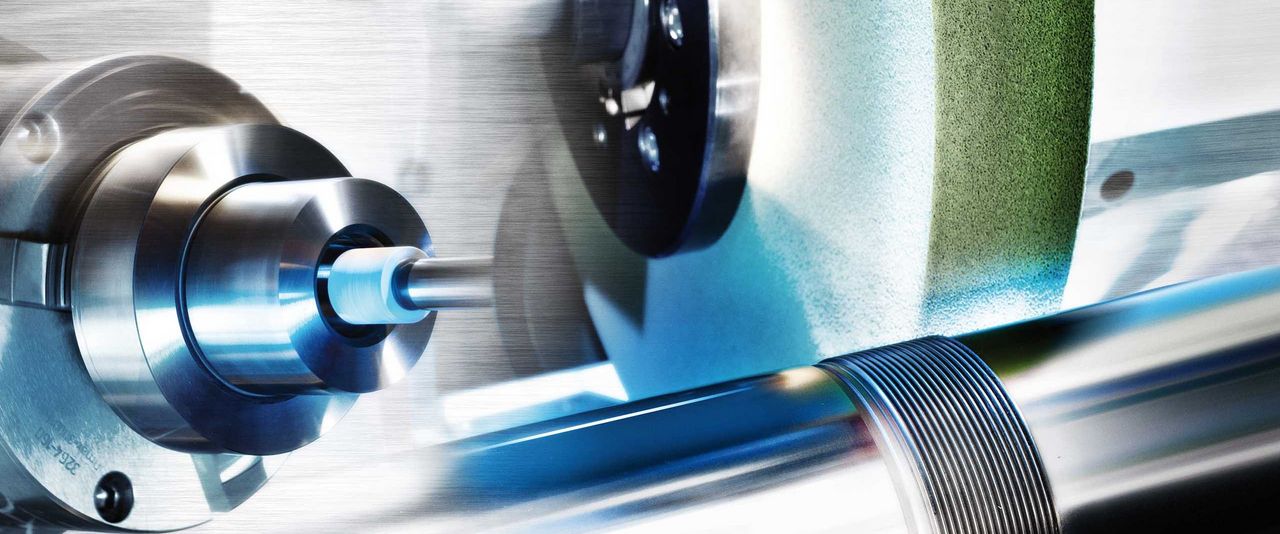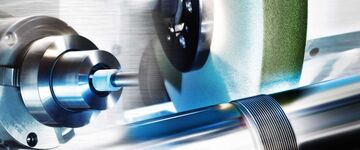The finishing touch — Intelligent process monitoring increases quality and reduces waste
Press too hard, and the painstakingly crafted part will be damaged in the final stage during the finishing work – resulting in a great deal of misery. In industrial grinding processes, the challenges are even more complex. Innovative solutions for achieving perfect grinding will be on show at the GrindingHub trade fair, which the VDW (German Machine Tool Builders' Association) is organizing in Stuttgart from 14 to 17 May 2024.
Empirical knowledge and artificial intelligence
When workpieces are machined automatically, there is a high risk of rejects if the processing is not monitored continuously and effectively. There is not always sufficient experience to call upon in order to achieve the optimum machine grinding result and skilled workers are also increasingly difficult to find these days, meaning that companies are now making increased use of artificial intelligence in industrial process monitoring. This is because grinding is often the last step in a long process chain for the manufacturing of components such as gear wheels or wheel sets. Rejects caused by errors therefore represent a significant cost factor, particularly in the production of small series and single parts. Highly automated, sensor-based digitalized monitoring of the grinding process can help here.
"Grinding quality depends on a wide range of parameters and settings – such as the diameter, profile and cutting ability of the grinding wheel – which are constantly changing due to wear during the grinding process," explains Christoph Plüss, Chief Technology Officer (CTO) of GrindingHub exhibitor United Grinding Group, based in Bern, Switzerland. "The more aspects that can be controlled or regulated digitally, the better the process control, ultimately leading to more efficient production and consistent quality."
Hear, see, feel
The interaction between the tool – in this case, the grinding wheel – and the workpiece, as well as the way in which the cooling lubricant behaves in the contact zone are relevant factors here. "Acoustic sensors allow you to record all kinds of influencing variables," explains Plüss. Geometric maintenance and conditioning, i.e. dressing the grinding wheel, are crucial aspects of process control. "Of course, this also includes monitoring and controlling the heat transfer through the machine structure and critical components, as well as taking intermediate geometric measurements on the workpiece itself," says CTO Plüss. Today, this is often done using contactless laser measuring bridges. The machines must be able to “hear, see and feel” in order to achieve optimum process control during grinding. United Grinding, with its brands Blohm, Ewag, IRPD, Jung, Mägerle, Mikrosa, Schaudt, Studer and Walter, has built up a very broad base of application knowledge and a large product portfolio for the production of high-precision components.
Automated monitoring of the grinding process is particularly effective for small batch sizes. "The setting up, retooling and running in of grinding processes can be very time-consuming. The smaller the batch size, the more often these have to be done," explains Plüss. The running-in process can be carried out more effectively if the grinding process is supported by intelligent sensor technology, process monitoring and a wealth of stored empirical knowledge – thereby raising productivity.
This is also a subject of academic research. "Any changes in the process or fluctuations in quality must be detected at an early stage in order to be able to make economical use of automated grinding processes. Grinding processes are influenced by non-reproducible and stochastic disturbance variables, such as varying grinding wheel properties or operators modifying the variables," says Henning Buhl, Head of the Machine Components Department at the Institute of Production Engineering and Machine Tools (IFW) at Leibniz Universität Hannover, describing the problem from a scientific perspective. "It cannot therefore be assumed that the grinding process will behave consistently and predictably," concludes Buhl.
Potential efficiency gains not being exploited in many factories
Relatively conservative process parameters are used at present, with many users carrying out random quality checks. This means that the full potential is not being utilized. In turn, this reduces efficiency levels and only enables downstream error detection, making it impossible to avoid rejects. Continuous process monitoring could be used to detect any changes which arise during production, and adapt the process accordingly. This also makes it possible to adjust the control variables to achieve higher productivity, says Buhl.
In many factories, there are numerous examples where potential gains from digitalization and sensor-based process monitoring are not being exploited. "Internal machine data can currently be used to detect changes in the process. However, in many cases there is insufficient resolution and level of detail to find the cause of the change and decide upon a suitable countermeasure," says Buhl. Additional high-resolution signals from further sensors would allow more information to be obtained and combined to enable effective monitoring of production. "Digital data acquisition of process forces and vibration offers great potential here in transferring new findings from the field of turning to grinding, for example," explains Buhl.
Measuring in difficult circumstances
However, the energy and data transmissions from the sensors represent major challenges, as the measurement data must be transferred from a fast-moving tool to a stationary evaluation unit in the control system. Buhl also points out that the measuring system must be robust enough to provide reliable recording of measurement data despite the influence of specific temperature conditions and cooling lubricants.
A frequently used approach in the monitoring of grinding processes is the measurement of process forces. This helps quantify the dynamic stresses arising on and within the workpiece and the tool. It provides information about the present intervention conditions in the process and the current state of wear. "The process forces rise continuously due to clogged pores or grain flattening on the grinding wheel. The constantly changing intervention conditions must therefore be taken into account when defining the monitoring limits, meaning that static methods are only of limited suitability," says Buhl. Precise measurement of the process forces is essential for meaningful evaluation of the signals and thus for accurate monitoring.
Closer to the limit with data-based analysis
Intelligent algorithms are used to extract patterns from complex collections of data in order to be able to use AI for optimization. This is of particular interest in series production. It allows digital fingerprints of the processes to be created, and changes or optimizations to be used specifically for monitoring and optimization. “It is difficult to say in general how high the efficiency gains are," explains Plüss. "But it is only human nature to plan in certain safety reserves. Intelligent process optimization and monitoring render these reserves visible and help minimize them. This allows you to get closer to the limit in a controlled way."
Of course, there are practical limits to the digital monitoring of grinding work in industry. "You can only control and optimize what you can measure and record," the United Grinding CTO sums up. The exhibitors at GrindingHub will be showing what can already be measured and optimized today with the aim of achieving perfectly finished surfaces. Visitors will be able to experience the entire value chain of grinding technology live, from the grinding machine itself to software tools and process peripherals through to measuring and testing systems.
Author: Daniel Schauber, Specialist Journalist, Mannheim
Our press release is also available for download: Download press release (PDF, 193 KB)
Press release images: Download Press release images (PDF, 206 KB)
back to overview


